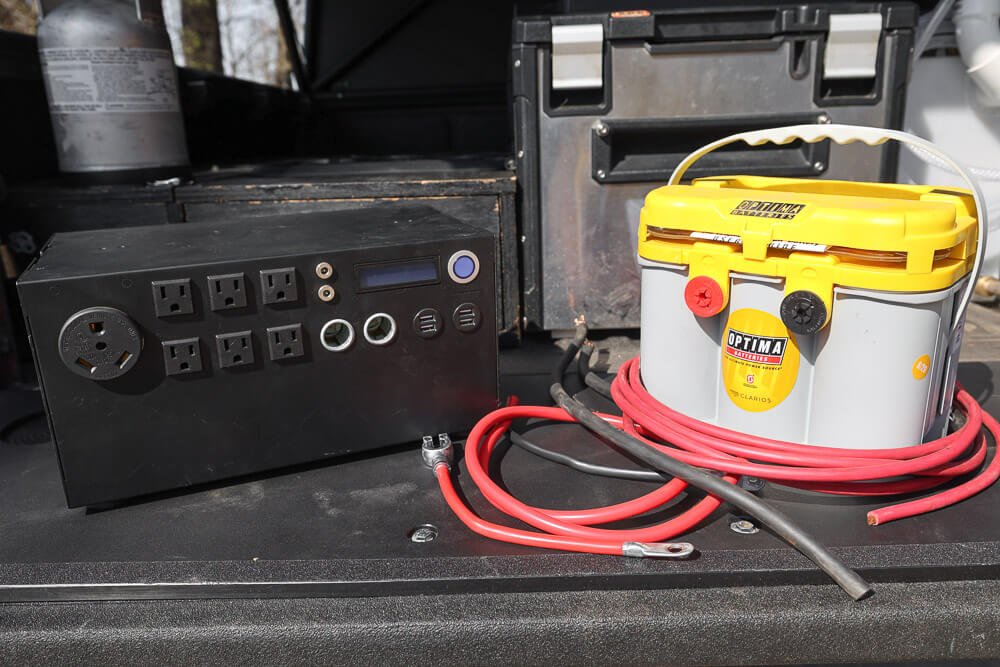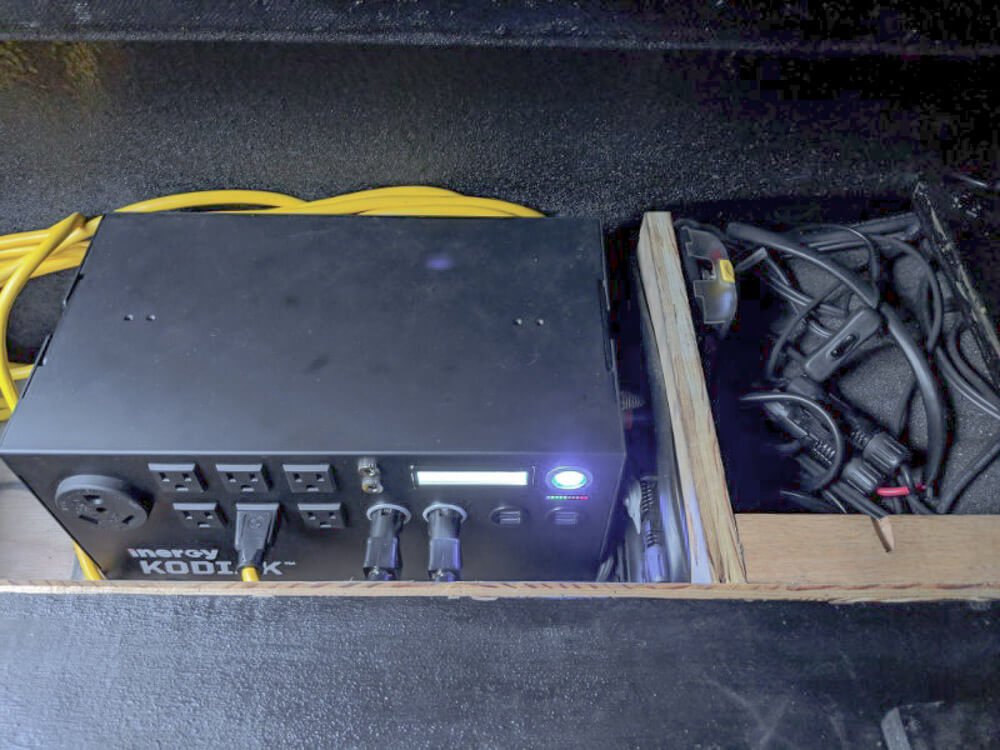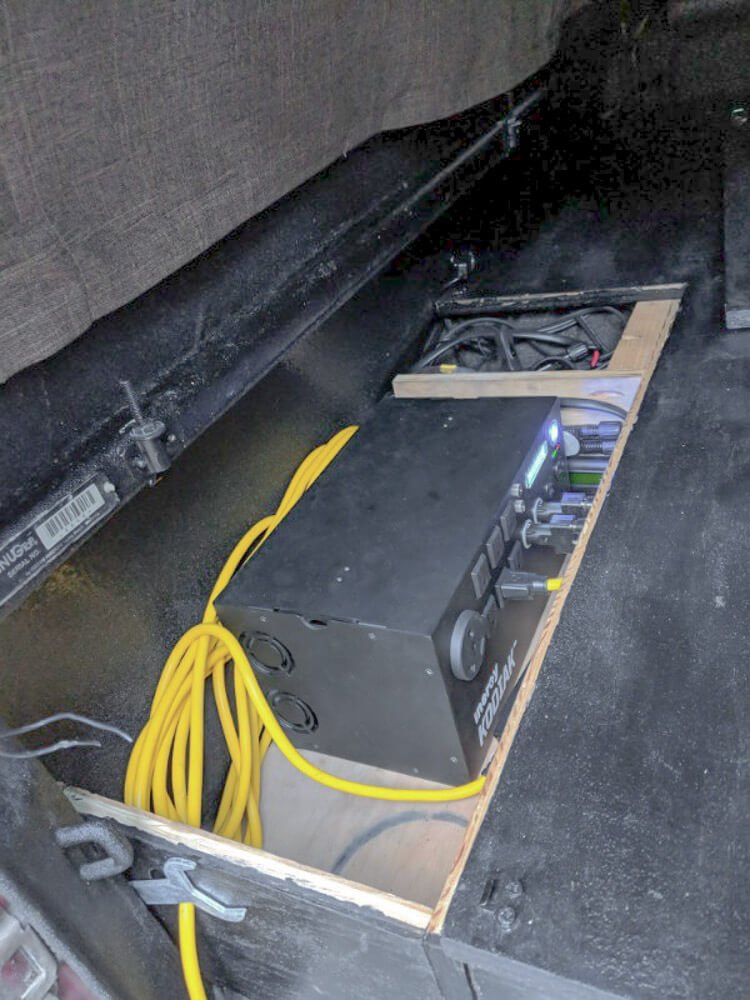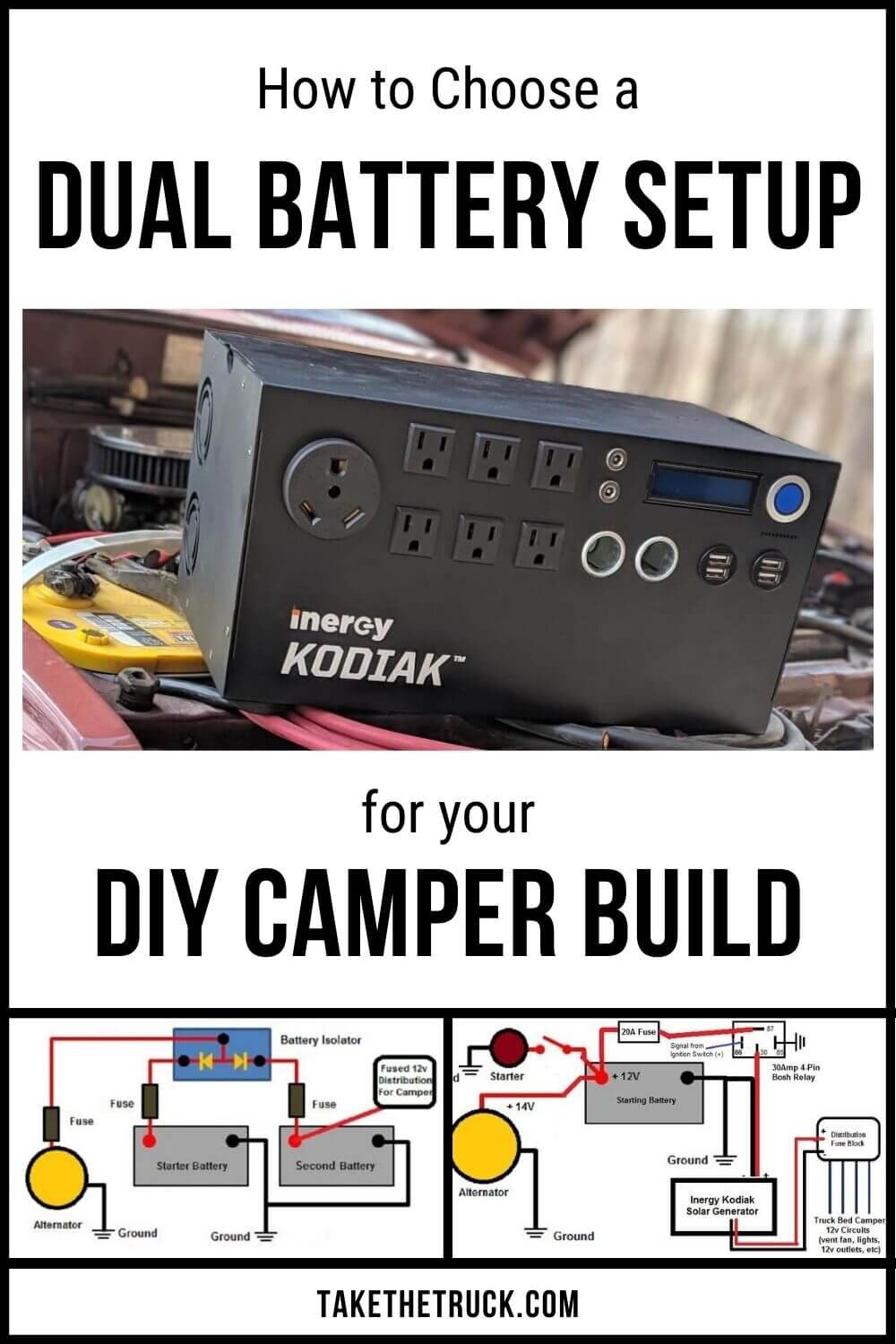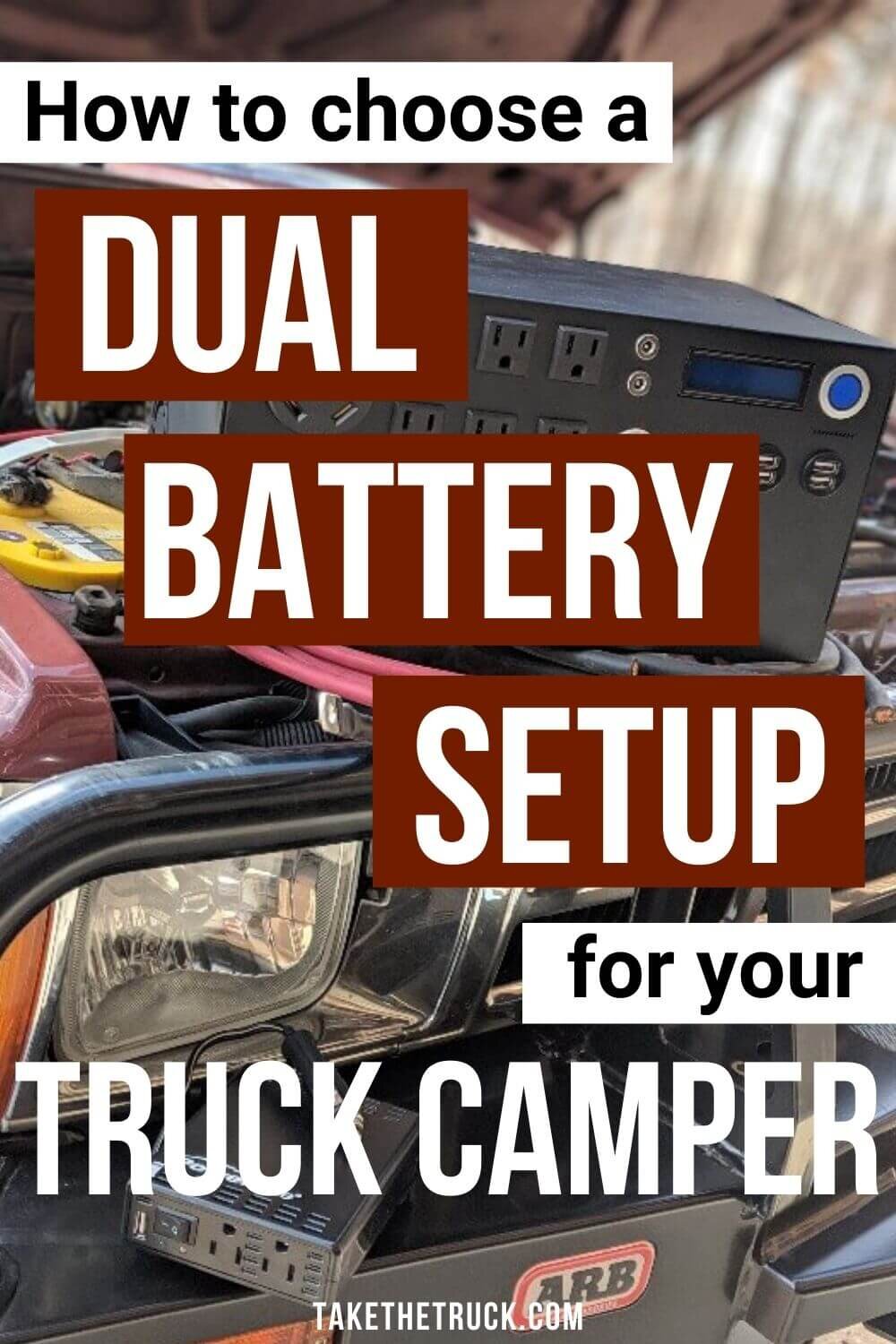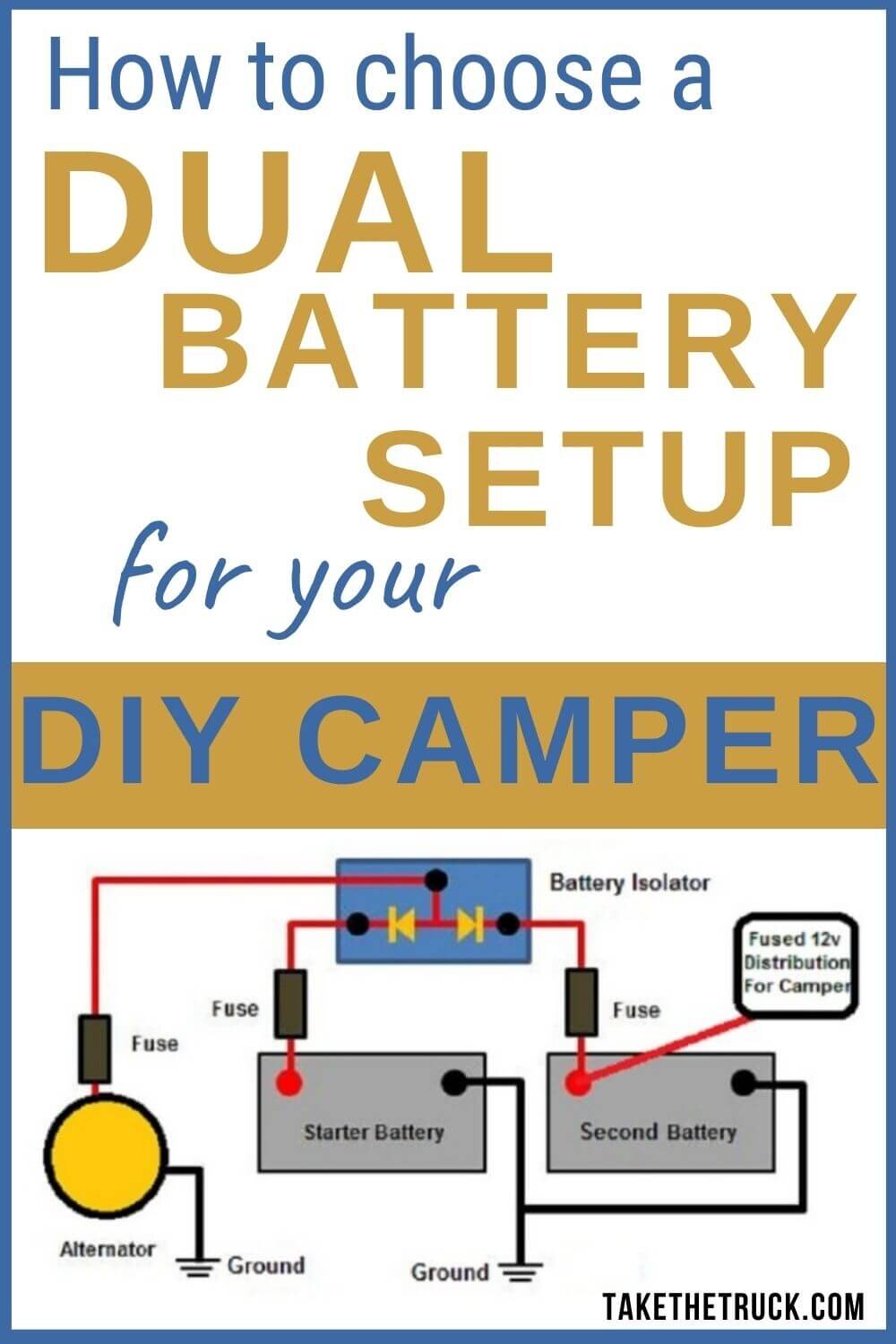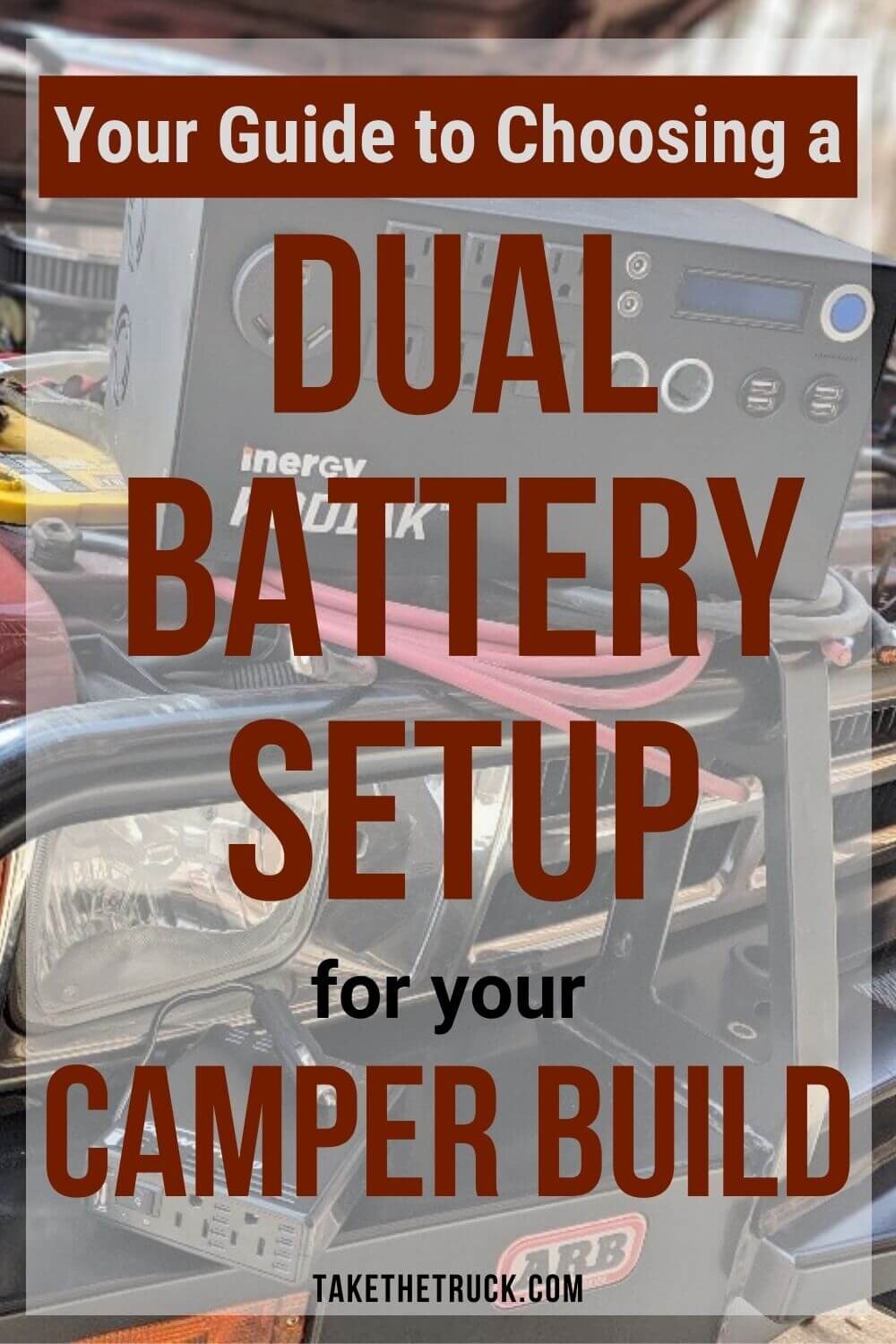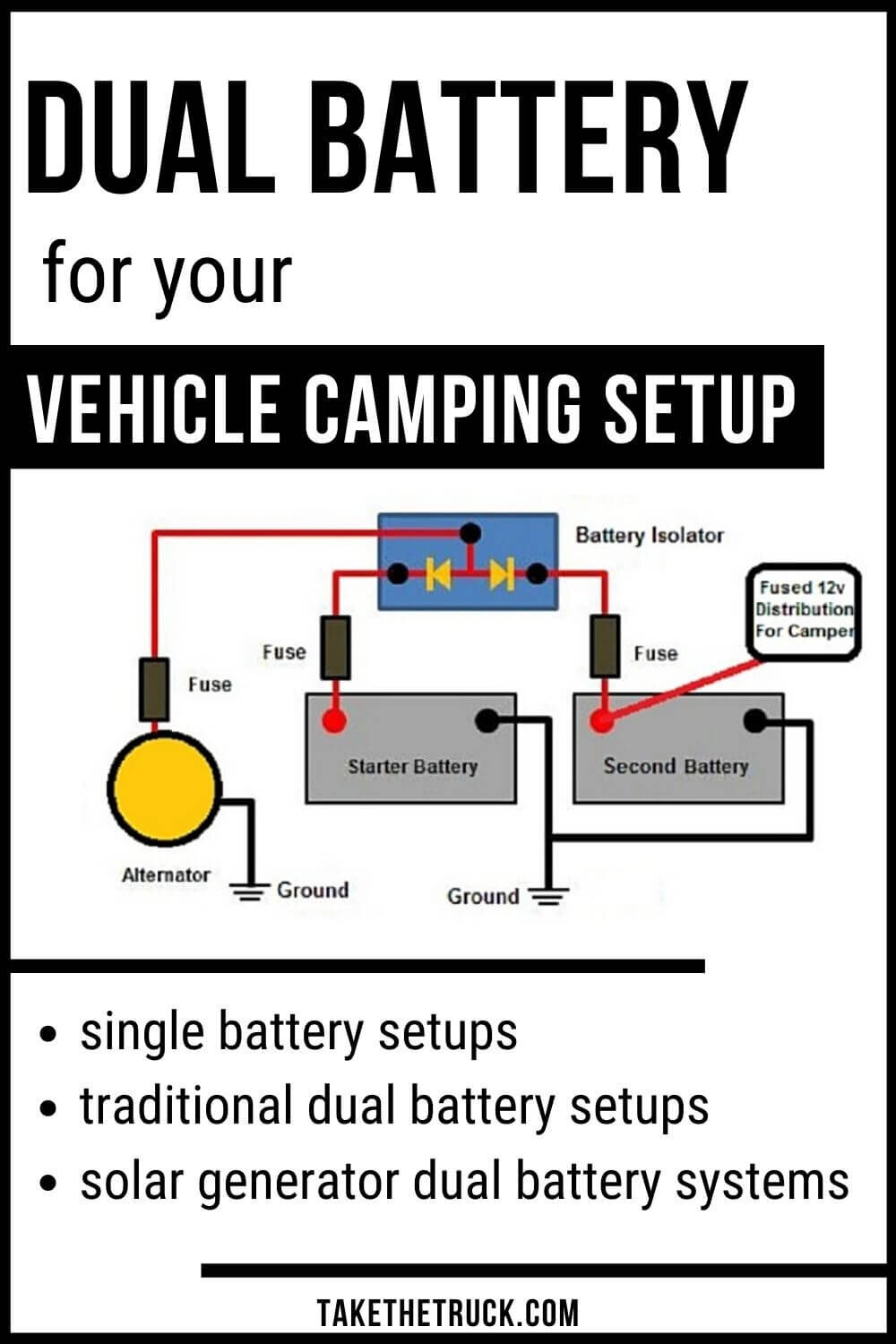How to Choose The Best Dual Battery Setup
When we decided to turn the truck into an overland adventure vehicle, one of the most challenging elements we had to consider was a reliable way to meet our power needs while camping. Especially with our plans of working remotely while off grid.
In this post we’re going to walk you through our dual battery system decision process, the camping power supply options available, and how you can integrate a solar generator into your dual battery setup to meet your camping power needs.
***DISCLAIMER: We are NOT professional electricians. The information provided in this post is bore solely from our personal experience and opinion. A professional should always be consulted when dealing with any electrical system***
*(This post contains affiliate links. This means we may receive a small commission, at no additional cost to you, if you make a purchase through a link. See our full disclosure.)
Assess Your Needs For a Dual Battery Setup
First, if you’re completely new to electrical systems, start by checking out Part 1 of our Camping Power Series for a straight-forward explanation of basic electrical terms and principles.
Next you’ll want to narrow down all the electrical devices you may need to power while camping or traveling using a dual battery system.
For us that list looked fairly simple at first glance:
Charging Mobile Devices (2 cell phones, and a laptop)
Lighting for our truck camper
Then you will need to determine the power consumption (watt usage) of each of those devices from a day-to-day perspective based on your usage - BEFORE you can make an informed choice on a camping power supply or a dual battery system that’s right for you - especially if you’re planning to camp off-grid for any length of time.
A watt meter* - which is a device that measures power usage/draw - is very handy for determining the power consumption of your devices, OR you can look at the device’s power supply label and use the below formula to get a fairly decent idea:
Watt Need = hrs of usage per day x amps per hr drawn by the device x volts
Check out Part 2 of our Camping Power Series for a more detailed explanation of how to calculate your camping power needs, to help estimate the type of dual battery setup you’ll need (it includes a free downloadable camping power needs calculator).
You may require more or less power than our own personal dual battery system depending on how many devices you need to power and how much you use those devices while camping. Just keep in mind:
The more devices you bring camping, the more power you’ll need.
And the more power you need, the more expensive your dual battery setup will become.
Consider Your Dual Battery Setup Budget
Cost is an important factor in all our decisions. And we’re sure it is for you as well! So now that you know your power needs, you can assess your dual battery system budget based on these needs.
Option 1: Single Battery Setup
If we didn't need a fridge and a vent fan we could have gotten by using our vehicle’s existing lead acid starting battery and 12v electrical system, charging our devices from the factory 12v outlets, and forgone a dual battery system altogether.
**UPDATE 2024: Since this article was originally published in 2019, there have been incredible advancements in lithium battery technology and there are now lithium dual-purpose starting/deep cycle batteries on the market that can be a viable alternative to dual battery systems, easily powering a 12v camping fridge, vent fan, etc. off a single battery while traveling. We are using one in our new overland truck build, and love it - more on this below!
Option 2: Traditional Dual Battery Setup
We could have ran a traditional dual battery setup like we had in our previous RVs, adding an additional battery that is charged separately from our vehicle’s AGM lead acid starting battery.
Option 3: Solar Generator Dual Battery System
When we were downsizing from the fifth wheel, opting to build out our old Toyota pickup for budget travel, we wanted to ensure we’d never have to worry about power while camping off grid. So we splurged by integrating a solar generator into our dual battery system.
While each of these options can vary in expense depending on the specific components used, let’s walk through these options in order of average expense, so you can see which best fits your camping power needs and budget.
Select a Dual Battery Setup That Meets Your Camping Power Needs
OPTION 1 - Single Battery Setup (Using your vehicle’s existing 12v Power for Camping)
Your vehicle’s electrical system consists of an alternator that charges a battery that supplies power to start and run your vehicle, as well as power 12v accessories.
If your needs are no greater than running a few LED lights, charging your phone(s), and the occasional laptop, your existing lead acid starting battery may be sufficient to meet your power needs while camping and you may not need a full dual battery setup.
By using your vehicle’s existing electrical system and a cheap inverter* (we recommend a pure sine-wave inverter to protect sensitive electronics) that you can pick up from pretty much any big-box retailer or automotive store, you can simply plug the inverter into your vehicle’s 12v outlet and then plug your devices into the inverter and you’re ready to roll for a total of about $70.
***TIP: Try to find and use devices and lighting that already operate or can be charged on 12v (car chargers) - all modern phones, and even most laptops can be. But there are also some great 12v slow-cookers, ovens, and refrigerators out there.
Remember to assess your wattage needs, and always carry a jumper pack: Most standard lead acid starting batteries are limited to 35-75 amp hours (of which only 50% of that power is usable before the battery is dead). If you decide to run a single battery setup, you should always carry a lithium jumper pack* in the event you deplete your vehicle’s starting battery while camping.
If you’re not running your vehicle regularly or traveling daily, devices like 12v slow cookers, ovens, and refrigerators will likely draw more power than your vehicle’s alternator and single lead acid battery can supply.
So you may need to consider a dual battery system to meet your camping power needs.
**UPDATE 2024: A new 135ah (1620watt) Lithium Dual Purpose Starting and Deep Cycle Battery has been released that is a drop in replacement for your vehicle’s starting battery. We’ve been using and testing it for the last two years in our latest overland truck build for powering EVERYTHING on our adventures, and it might be the right power solution for you as well. Read our long-term review on it here:
The Do Everything Overlanding Battery That May Make Dual Battery Systems Obsolete
OPTION 2 - Traditional Dual Battery Setup
In a traditional dual battery setup there is a device, called a battery isolator, that enables your vehicle’s alternator to charge both the starting battery and a second “house” battery independently of one another.
This is a very flexible option, and can still be done with a modest budget if needed.
By adding an additional battery (commonly lead-acid deep-cycle, AGM, or Gel type) for your devices’ power needs, you keep your starting battery “isolated” so that it is never at risk of being run completely dead and leaving you stranded.
This also enables you to add enough capacity/amp-hours/batteries to supply power for things like a crock-pot, a camping fridge, or even a microwave when combined with a properly rated power inverter.
Lithium Dual Battery Systems: If you’re wanting to integrate one or more 12v Lithium Deep Cycle batteries into your dual battery system, you’ll typically need to utilize a DC-to-DC charge controller*, in place of the standard battery isolator, to provide safe amperage (typically 20-60 amps) for charging your lithium batteries from the vehicle’s alternator. DC-to-DC charge controllers can also be utilized with lead acid AGM batteries as a more efficient alternative to a standard battery isolator, and most DC-to-DC charge controllers allow you to seamlessly switch to solar panel charging as well.
Considerations When Planning a Traditional Dual Battery Setup
Weight - Lead-acid, AGM, and Gel type batteries are bulky, and often weigh a substantial amount.
A 105 amp hour AGM battery, for instance, weighs almost 70 lbs!**Newer lithium batteries will typically provide a comparable amount of power at less than half the weight, but the up-frontcost can be significantly higher.
Usable Capacity - Typically it is not recommended to discharge lead acid AGM batteries lower than 50% of their rated capacity to avoid damage or shortening their life-span.
So a battery rated at 75 amp hours only has 37.5 usable amp hours (or 450 watts).Size - Though some trucks have a factory location for a second battery in the engine bay, finding a place for a big 105 amp-hour lead-acid deep-cycle battery can be difficult (but not impossible).
So determine your need (in amp-hours), pick a battery that meets that need, then make sure the dimensions of that battery (or batteries) can be fit into your planned overland vehicle, truck camper, car camping setup, etc. before moving forward with a particular dual battery system.Cost - To effectively use a dual battery system you need more than just an additional battery.
At minimum you need a power inverter, a battery isolator, heavy gauge DC wiring (0, 2, 4, 6 ga - depending on the length and power draw) for supplying power to and from the battery isolator to your second battery, and if you want solar - a solar charge controller (or DC-to-DC charge controller) for charging your house battery, a solar panel(s), and wiring to connect it all.
All these things can add up to a substantial amount, and may even outpace the cost of an all-in-one solar generator dual battery setup.But it doesn’t have to cost a fortune:
In our old Toyota Sunrader RV we installed a traditional dual battery system that consisted of:
A battery isolator ($80)
105 amp hour lead-acid deep-cycle battery ($130)
1000 watt pure sine wave inverter ($300)
About 25 ft of 2 to 4 gauge DC wiring ($100)
We chose not to implement solar, due to cost at the time. Plus we were driving daily for hours which enabled us to always maintain a charge from the vehicle’s alternator.
But now you can get a solar charge controller, and a 100 watt panel for under $250.
So for about $600 (or well under $1000 if we had added solar) we had an off grid dual battery system that could run all our lights, a vent fan, a fridge, a 2-quart slow-cooker, and even a microwave (for a very limited amount of time - reheating food or warming a drink here and there).
Complexity - There are a lot of components that go into a traditional dual battery system. A lot of wiring, and a lot of space is needed for all those components.
If any of these aspects of a dual battery setup give you pause, integrating a solar generator into your dual battery setup may be worth considering.
OPTION 3 - Solar Generator as a Dual Battery Setup
A solar generator is intended to provide an all-in-one off grid power solution for camping. They generally include a battery, solar charge controller, and power inverter, all in one compact and easy-to-use device.
They come in a variety of shapes and sizes to suit your camping power needs, and also offer lithium-ion battery options which decrease weight and size substantially. Lithium-ion batteries also have a much higher usable capacity of around 80-95% (versus the 50% usable capacity of the other battery types we discussed in a traditional dual battery setup).
However with so many solar generator options out there, and new manufacturers and models becoming available all the time, it’s hard to tell what to look for. And it’s even harder to choose what model would be best to use in a dual battery system.
Considerations When Planning a Solar Generator Dual Battery Setup
Usable Capacity - Typically it is not recommended to discharge lithium batteries more than 80-95% of their rated capacity (depending on chemical make-up) to avoid damage or shortening their life-span.
So when a solar generator is rated at 1100 watts (or about 90 amp hrs) it actually has a usable capacity of 880 watts (or about 73 amp hours at 80%).DC Charge Rate - This is very important when it comes to using a solar generator in a dual battery system for travel or camping.
If it cannot charge at a fast enough rate, or worse, if it has no way to charge from a 12v DC outlet (car charger) at all - then it likely won’t be practical as a dual battery setup while car camping or truck bed camping.Size - Again determine your power need (in amp-hours or watts), pick a solar generator that meets that need, then make sure the dimensions of the solar generator can fit into the physical space you’ve planned in your vehicle build, camper, etc.
Cost - This is the biggest caveat to integrating a solar generator in a dual battery setup.
We’ve found that above a certain price point it may become more practical to go with a traditional dual battery setup.
This is largely dependent on your personal needs and budget, but during our search, anything above a 1500-watt capacity began to lose justification from a cost-benefit perspective.Power Output (110v AC & 12v DC) - The power inverter in the solar generator converts the DC power stored in the solar generator’s lithium-ion battery to AC power for devices that don’t operate on 12v DC power.
Consider the devices you want/need to power, and make sure the inverter in your solar generator can accommodate the device’s power draw (e.g., if you want to use a 1000w microwave, the solar generator’s inverter needs to be rated for more than this amount).
You also want to make sure the DC output of the solar generator offers a high enough amperage for your 12v devices.Feature Set - Does it have enough 110v AC and 12v DC power ports? USB ports? Is it’s capacity expandable? Does the built-in LCD display monitor provide the information you need, and is it accurate? Is the battery user replaceable?
Review all the solar generator’s features and make sure you’re happy with them. It’s a big investment.
When considering which solar generator model would best fit into our dual battery setup, we were able to eliminate most by taking the above considerations into account.
Updated 2024: This technology is constantly evolving and a lot has changed since we originally invested in our own solar generator dual battery system just a few years ago. Currently, the below three models (in order of cost) are the best solar generators for integrating into an in-vehicle dual battery system.
This is primarily because Goal Zero now offers a Yeti Link Vehicle Integration Kit which allows for much faster in-vehicle charging (450-750 watts) and is compatible with both the 1000x and 1500x recommended below. Though it does come at a steep additional cost.
Goal Zero Yeti 700
Usable Capacity: 667 usable watt hours or 50.17 amp hours (13.5VDC)
DC Charge Rate: 120 watts at 12V with factory car charger ( appx. 6 hours to fully recharge from dead)
Size: 11.32” Wide x 7.84” Tall x 8.55” Deep
Power Output: 600 watt continuous (1000 watt surge) Inverter putting out 5 Amps at 115VAC. Can output up to 12 Amps at 13.5VDC continuous.
Feature Set:
Output Ports: 2 - USB-A (QC), 2- USB-C (one PD), 2 - 115VAC, 1 - 12 amp 12VDC car port, 1 - 10amp 6mm 12VDC port
While not compatible with the Yeti Link Vehicle Integration Kit, this 6th gen solar generator uses more durable LiFePO4 battery chemistry that offers a longer life and fast (2hr) recharge from AC power.
2. Goal Zero Yeti 1000x
Usable Capacity: 983 watt hours or 91 amp hours (10.8V) = appx 786 usable watts or 72.8 usable amp hours (at recommended 80% max discharge)
DC Charge Rate: 120 watts at 12V with factory car charger (appx. 4 hours 30 min to fully charge from dead) or 300-750 watts with Yeti Vehicle Integration Kit (appx. 1.5-4 hours), and up to 50amp/600watt solar charge input
Size: 15.25” Wide x 9.86” Tall x 10.23” Deep
Power Output: 1500 watt continuous (3000 watt surge) Inverter capable of putting out up to 12.5 Amps at 110VAC. Can output 15 Amps at 12VDC.
Feature Set:
Output Ports: 2 - 12.5 amp 110VAC outlets, 1- 15 amp 12VDC car ports (plus 1- 15 amp DC power pole & 1 - 10 amp DC 6mm jack), 2 - USB-C & 2 - USB-A outputs
While this model has not been updated yet with the LiFePO4 battery chemistry, it is compatible with the Yeti Link Vehicle Integration Kit for extremely fast DC charging
Battery is user replaceable
3. Goal Zero Yeti 1500X
Usable Capacity: 1516 watt hours or 140.4 amp hours (10.8V) = appx 1213 usable watts or 112.32 usable amp hours (at recommended 80% max discharge)
DC Charge Rate: 120 watts at 12V with standard factory car charger (appx. 14 hours to fully charge from dead) or 300-750 watts with Yeti Vehicle Integration Kit (appx. 2-5 hours), and up to 50amp/600watt solar charge input
Size: 15.25” Wide x 10.37” Tall x 10.23” Deep
Power Output: 2000 watt continuous (3500 watt surge) Inverter putting out 16.5 amp at 120VAC. Can output 13 Amp at 12VDC
Feature Set:
Output Ports: 2 - USB-A, 2 - USB-C, 2 - 120VAC, 1 - 13 amp 12VDC car port, 1 - 10 amp 12v 6mm port, 1 - 10 amp 12v power pole port
While this model has not been updated yet with the LiFePO4 battery chemistry, it is compatible with the Yeti Link Vehicle Integration Kit for extremely fast DC charging
Battery is user replaceable and expandable
For a more detailed walkthrough of using solar generators for camping be sure to check out our guide: Everything You Need to Know About Solar Generators for Camping.
Why A solar generator Made the perfect dual battery setup for our truck camping build?
It provided more than enough capacity for our personal worst-case scenario 663 watt need
The inverter was capable of meeting any AC power needs we may have.
It could run a microwave, blender, a number of power tools, and charge laptops, cell phones, etc.
The huge selection of output options enabled us to run our fridge, camper vent fan, lights, and all our other devices easily and without a complex system of wiring.
It was the PERFECT size for the space in both our previous full width truck bed sleeping platform design and our redesigned half width truck bed sleeping platform design.
MOST IMPORTANT OF ALL, the factory supplied DC charge rating was adequate to meet our needs.
The ability to quickly charge on the road was essential to our overland travel plans.
It was easy to remove when home, and use as a backup power supply during power outages (in place of a traditional gasoline generator)
We took the time to hard-wire a dedicated 15 amp 12v DC charging port for our solar generator directly from our truck’s starting battery using the factory car charging cable, a 20 amp in-line fuse, 10 gauge pos./neg. wires, and a relay switch that only “opened” the DC charge to the unit while the truck was running.
The diagram below shows roughly how this was done.
But you can simply plug your solar generator’s car charging cable into your 12v outlet on your vehicle and have an instant dual battery setup!
We also used a 100 watt solar panel to keep things topped off when stationary. This usually offset the power consumption of our fridge while off grid for extended periods, allowing us to stay out longer without the need to idle the truck to recharge the solar generator.
Having a reliable dual battery system while camping off grid is incredibly valuable and can really improve your comfort level while truck bed camping and traveling, and we hope this guide has helped you select the best dual battery setup for your adventures.
For more helpful truck camping, overlanding, or family travel tips and guides be sure to SUBSCRIBE for our bi-monthly blog updates.
And as always, thanks for reading!
Related Posts:
Everything You Need to Know About Solar Generators for Camping
DIY Fridge Slide Alternative for Truck Camping and Overlanding
Want to reread this later? Pin it!

